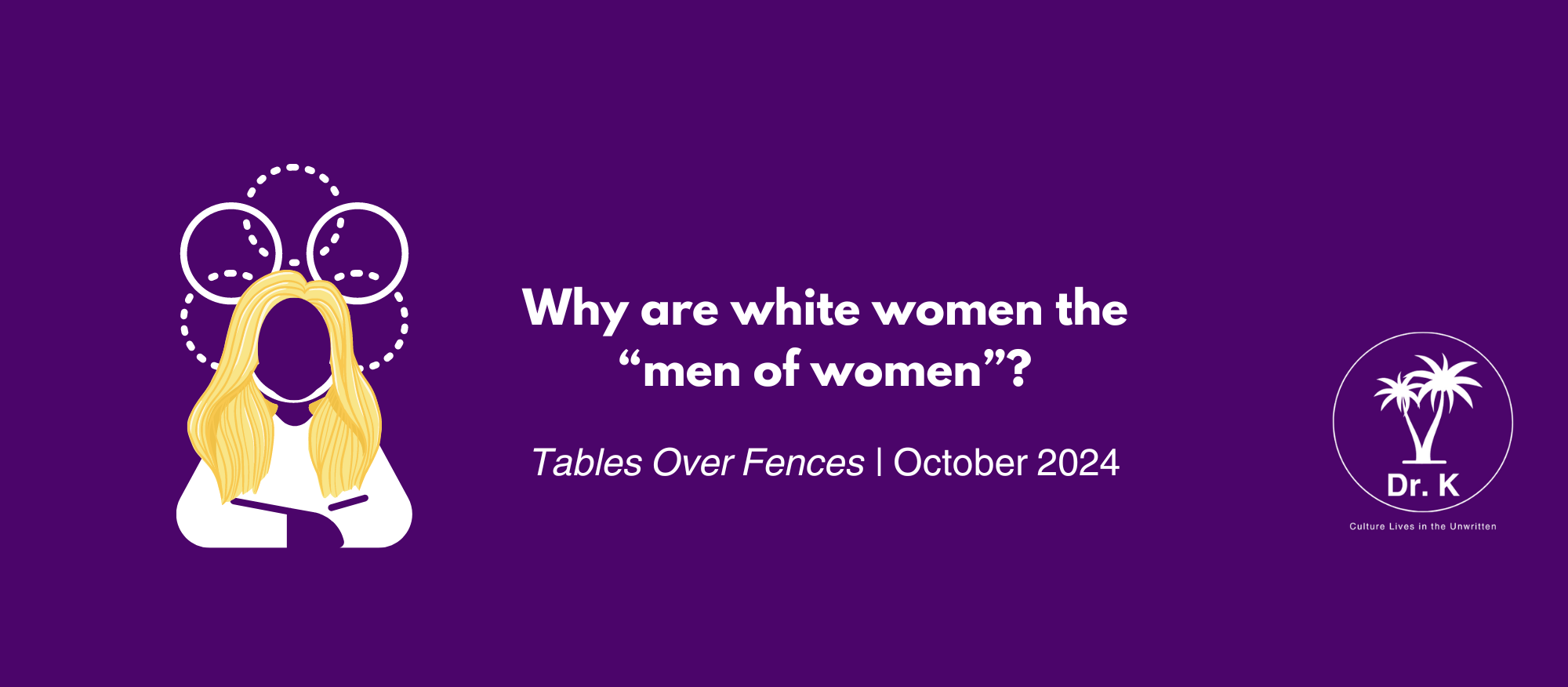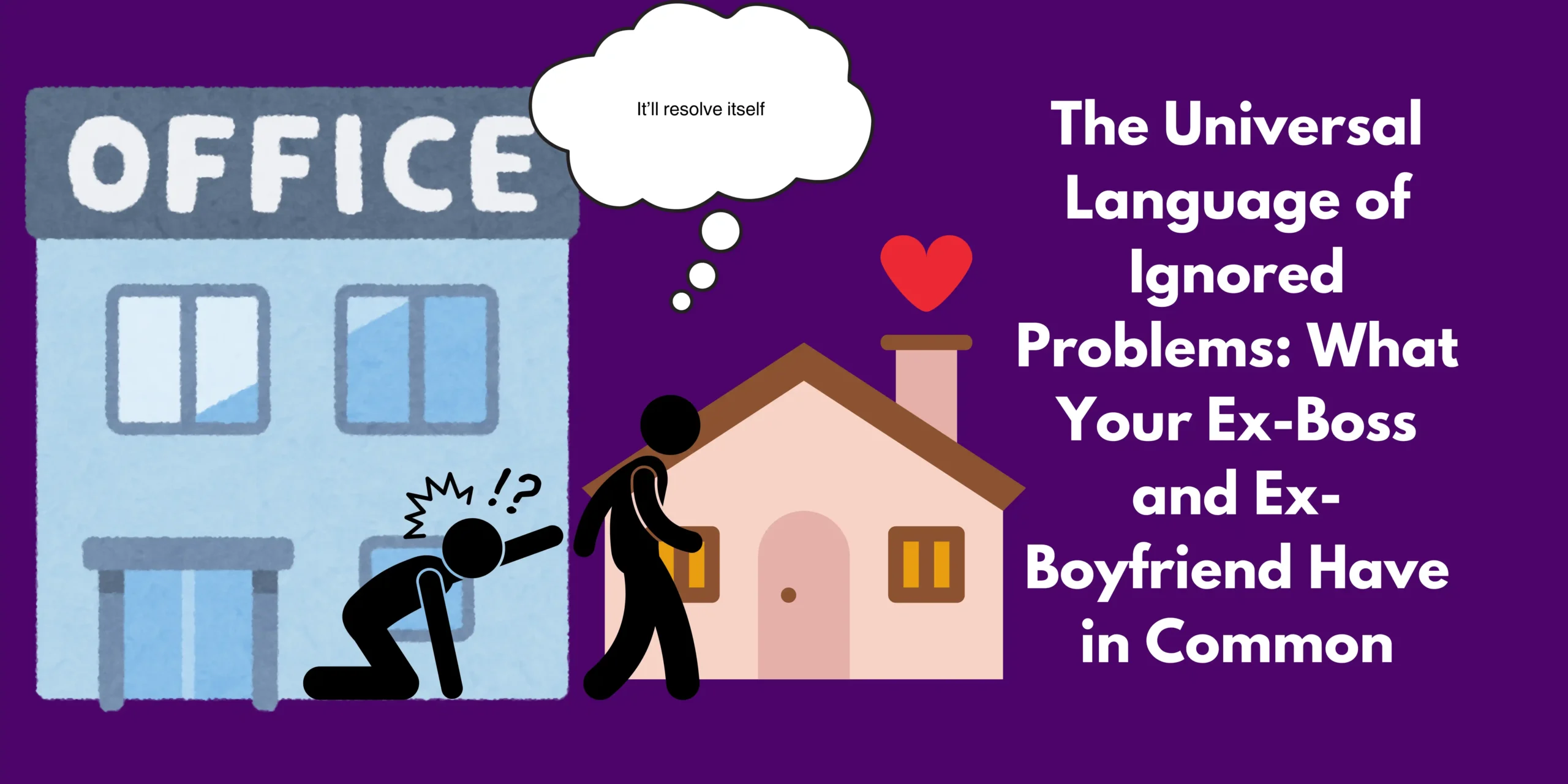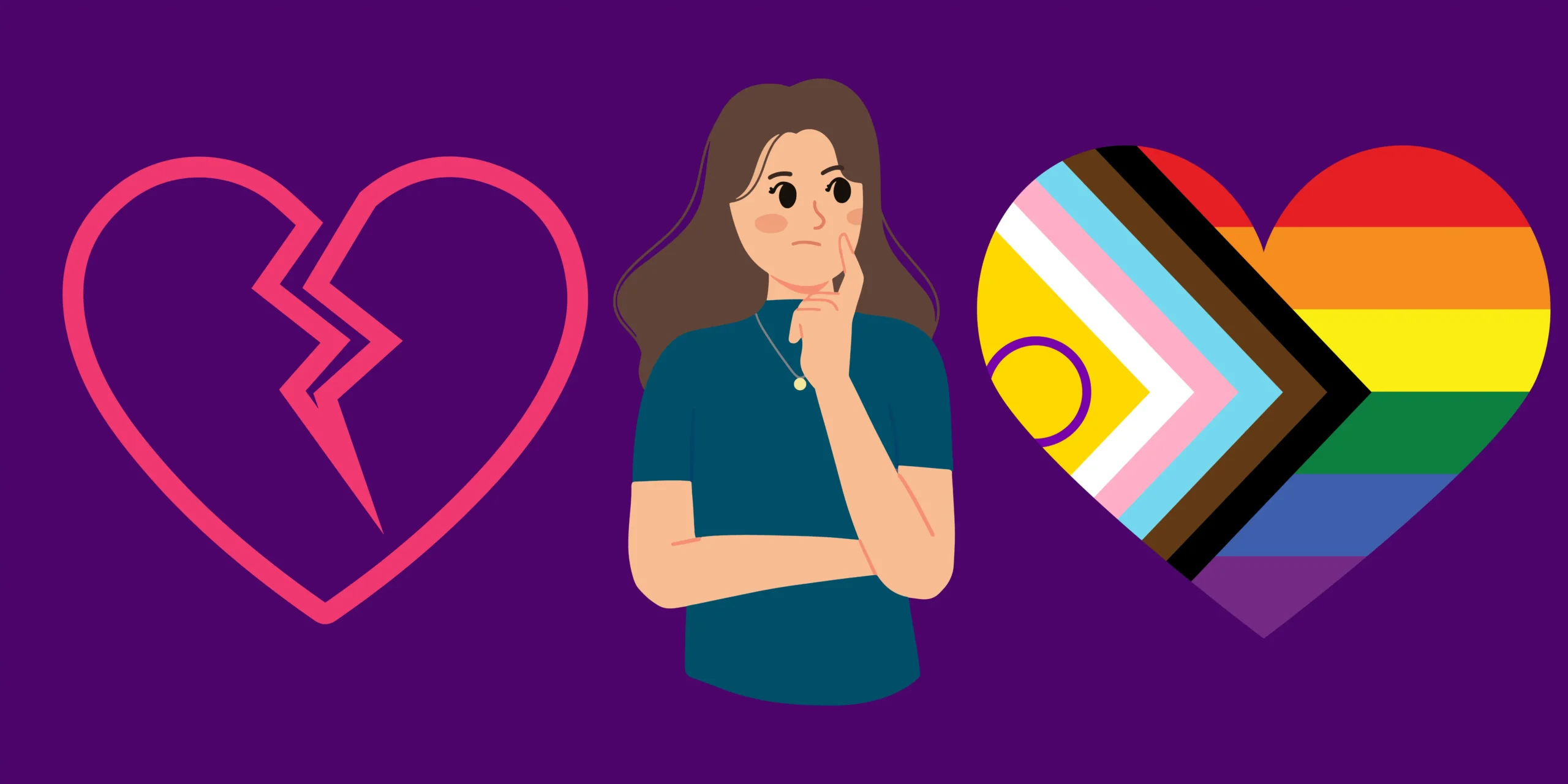Why are white women the “men of women”?
1 year ago

Last month I talked about how economic inequality was structured and leveraged race segregation to divide the working class against each other. The month before that, I talked about poor leadership and how gendered divides in emotional intelligence fuel a large part of this. This month, I am talking about my own race/gender identity group — white women — where we have opportunities to grow and why it’s so hard for us to see.
It’s always hardest to see our own identities, so this was challenging for me. Godspeed if you bear with me. Leaning on my working-class roots, we will start with a story.
This past April, an internet creator started interviewing women asking if they would rather be alone in the woods with a man or a bear. Overwhelmingly, women stated bear.
This finding shocked and enraged many men. It was a testament to how unsafe women feel in men’s presence. When we are isolated from witnesses, we have more trust in the behavior of a large, clawed animal than a man. Many men fought this idea, discussing how many men are around women daily. But that is exactly the point. 1. Men behave differently in front of other men instead of when they are alone with women, 2. Women feel unsafe every day.
Women pointed out the irony of men telling women what they can and cannot be afraid of…of the oppressor dictating how the victim might feel. These disgruntled men ignored all of the written rules (poor legislative defense for violence against women) and unwritten rules (toxic gender norms enforcing dangerous relationship dynamics, stigma of being a single mother if you leave him, wage gaps and financial distress of being on your own) that would lead to women choosing the bear.
But then another trend popped up. Black women said they would rather be alone in an office room with a white man than a white woman. And white women lost our shit.
And similar to the men, we ignored all of the written rules (documented historical offenses of white women slave owners abusing Black women, excluding poor women and women of color from the first two waves of feminism, hair discrimination, inequity in leadership roles both by gender and race) and unwritten rules (tone policing, bullying, and race x gender wage gaps demonstrating that even though we are paid less than white men, Black women are paid less than we are) of why Black women might feel this way. Many of us (the oppressors) started telling the targets why they were MORE oppressed by white men than by us.
This reaction from white women sparked a broader conversation online, giving rise to the provocative phrase: “White women are the men of women.” This internet phenomenon encapsulates a complex truth about intersectionality and privilege. Just as men often fail to recognize their privilege in gender dynamics, white women can be blind to their racial privilege in interactions with women of color.
The phrase “white women are the men of women” is jarring, and intentionally so. It forces us to confront uncomfortable realities about power dynamics within feminist movements and women’s spaces. It highlights how white women while experiencing gender-based oppression, can simultaneously benefit from and perpetuate systems of racial oppression.
This concept doesn’t mean that white women don’t face discrimination or challenges. It’s actually the opposite. It’s that white women do face discrimination and challenges AND still have privileges that non-white women do not. Additionally, in conversations about systems of oppression and who deserves rights, white women have a history of only looking out for their own rights and not supporting others (there are exceptions of course, but largely as a group, we were not rebelling during the slave trade, Jim Crow laws, etc.). Women of color have experienced all of the discrimination and challenges white women have faced…and plenty more, at the hands of white men and women. This disconnect highlights a crucial aspect of intersectionality theory. As Kimberlé Crenshaw, who coined the term in 1989, explained, intersectionality is a lens through which we can see where power comes and collides, where it interlocks and intersects. It’s not just about adding identities together, but understanding how they create unique experiences of oppression and privilege.
The reaction from white women to this sentiment was telling. Unlike the bear scenario, where women readily acknowledged their fear of men, many white women struggled to see themselves as potential oppressors. White men harm us too, so how could they be perceived as safe? But many of us didn’t listen to the response from BIPOC women. Some said white men do not come across as threatened by them, so they do not sabotage them as much as white women have. Others said that the power dynamics were clear between white men and Black women, but less clear between white women and Black women, and thus the unhealthy competition, sabotage, and bullying.
Research by Brunner and Costello reveals how this plays out in workplaces. Women supervisors and managers may engage in bullying behaviors that keep competent women from being noticed and promoted because they perceive opportunities for women as scarce; consequently, they do the following keep their sliver of power:
-
Gatekeeping: Controlling access to information, resources, or opportunities.
-
Micromanagement: Excessively scrutinizing the work of other women.
-
Credit appropriation: Taking credit for ideas or work done by others.
-
Social exclusion: Leaving certain women out of informal networks or important discussions.
-
Tokenism: Promoting a single woman to a visible position while failing to address systemic issues.
-
Cultural insensitivity: Dismissing or belittling cultural differences.
-
Stereotyping: Applying negative stereotypes to other women.
-
Scarcity mindset: In a system with limited opportunities for women, some may view other women, especially women of color, as threats to their own precarious positions.
-
Assimilation pressure: To succeed in male-dominated environments, some women adopt aggressive, typically masculine behaviors, including bullying.
-
Unconscious bias: Internalized stereotypes and prejudices can influence behavior even when individuals believe they support equality.
-
Structural reinforcement: Organizational cultures that reward competition over collaboration can erode solidarity among women.
-
Clothing norms: In Western countries, men typically don’t wear skirts or dresses, viewing them as exclusively feminine attire. Men or non-binary male-presenting people who stray for this and dare to dress in anything “feminine” are harassed and even met with violence. However, in Scotland, the kilt is a traditional garment for men, often associated with masculinity and cultural pride. Similarly, in many African and Asian cultures, men wear sarongs or long robes as part of their everyday attire. These differences highlight how cultural environment shapes our perception of gender-appropriate clothing.
-
Personal space: The concept of personal space varies greatly across cultures. In North America and Northern Europe, people generally maintain a larger personal bubble, while in Latin American and Middle Eastern cultures, closer physical proximity during conversations is the norm. This cultural conditioning influences how comfortable we feel in various social situations.
-
Expression of emotions: In some cultures, like those in Mediterranean or Latin American countries, open and expressive displays of emotion are common and encouraged. In contrast, many East Asian cultures value emotional restraint and consider overt displays of emotion as a sign of immaturity or lack of self-control. These cultural norms significantly impact how individuals express themselves and interpret others’ behaviors.
-
Concept of time: Different cultures have varying perspectives on time. Western cultures often view time as linear and finite, emphasizing punctuality and scheduling. Many African and Middle Eastern cultures have a more fluid concept of time, where relationships and present circumstances take precedence over strict schedules. This cultural difference influences how people approach appointments, deadlines, and social gatherings.
-
Harming a marginalized person (i.e., bullying)
-
Not recognizing resources someone with less privilege might need.
-
Refusing to provide someone with necessary resources because “well I didn’t need them so neither should you.”
-
Outright discrimination (i.e., finding excuses not to hire people who are different, treating them poorer when they are present, disproportionately overloading them with working, unfairly rating them lower in performance, etc.)
It’s tempting to want to focus on just one aspect of identity. It’s simpler, cleaner. But life isn’t simple or clean. When we try to separate race from gender from class, we end up with an incomplete picture that fails to capture the full complexity of human experience.
So when someone asks why I keep bringing race and gender into discussions about class, my answer is simple: because they’re already there. They’ve always been there. Ignoring them doesn’t make them go away; it just makes our analysis less accurate and our solutions less effective.
As Audre Lorde famously said, “There is no such thing as a single-issue struggle because we do not live single-issue lives.” When we embrace intersectionality, we open ourselves up to a richer, more nuanced understanding of the world. And in doing so, we create the potential for more inclusive, effective solutions to the complex problems we face.
-
Educate ourselves and others: Commit to ongoing learning about intersectionality, privilege, and systemic oppression. Share resources and insights with colleagues.
-
Amplify diverse voices: Use your platform or privilege to elevate the voices and ideas of women of color and other marginalized groups.
-
Practice active allyship: Don’t just avoid harmful behaviors; actively intervene when you witness discrimination or microaggressions.
-
Advocate for systemic changes: Push for transparent hiring and promotion processes, pay equity audits, and inclusive policies at your workplace.
-
Build diverse networks: Intentionally seek out and nurture professional relationships with people from different backgrounds.
-
Reflect on your own biases: Regularly examine your own thoughts and actions for unconscious biases and work to counter them.
-
Support mentorship programs: Participate in or advocate for mentorship programs that support the advancement of women of color in your industry
As Lorde also powerfully stated, “The master’s tools will never dismantle the master’s house.” We cannot hope to achieve true equality by adopting and perpetuating the very behaviors and systems that have kept us oppressed. Instead, we need to reimagine leadership, redefine success, and create new structures that value and elevate all women, in all their diversity.
As we grapple with phrases like “white women are the men of women,” it’s crucial to approach them not as accusations, but as invitations to deeper understanding. These provocative statements challenge us to examine our own roles in systems of oppression and to commit to true intersectional feminism.
And white women, I know that it’s hard. I feel our resistance. I know what it feels like to still be interrupted frequently by men at work (and at home). To have your ideas dismissed and then credit stolen later. To navigate sexual harassment everywhere in your life. To be ignored when you say something directly, or called a bitch, and then called manipulative when you try to do it more subtly. To be told that you’re also an oppressor and other women have it even worse can be the switch that trips the fuse. I know that it’s hard to not be heard and then be told your problem isn’t big enough. It might even be hard to fathom that entire groups of other women deal with all of these things and so much worse. However, we cannot extinguish the flames that burn us by lighting the pyres that burn others. Supporting women of color will make the world better because doing so defies the system itself. Instead of fighting to be queens of someone else’s castle, we have to grow a community garden. It’s time we changed the game entirely.
More blogs
Book Retreat Hiatus
Book Retreat Hiatus Social Class 3 semanas ago When the universe is ready for you, it’ll knock you onto your […]
Why are white women the “men of women”?
Why are white women the “men of women”? Social Class 3 months ago Last month I talked about how economic […]
Is inequality really about social class, not race?
Is inequality really about social class, not race? Social Class 3 semanas ago Class has been at the center of […]
The Universal Language of Ignored Problems: What Your Ex-Boss and Ex-Boyfriend Have in Common
The Universal Language of Ignored Problems: What Your Ex-Boss and Ex-Boyfriend Have in Common Social Class 5 hours ago “Why […]
Tips for Navigating Polarization at Work – From Independence Day to Election Day
Tips for Navigating Polarization at Work – From Independence Day to Election Day Social Class 5 hours ago Growing up, […]
Unlearning Homophobia, Learning Inclusion: A Leader’s Journey Toward a More Equitable Workplace
Unlearning Homophobia, Learning Inclusion: A Leader’s Journey Toward a More Equitable Workplace Social Class 5 hours ago It’s Pride Month, […]
How AI Can Help You Be a More Culturally-Competent Leader
How AI Can Help You Be a More Culturally-Competent Leader Social Class 3 months ago “If you walked into an […]
Is AI Going to Close Our Gender Gaps?
Is AI Going to Close Our Gender Gaps? Social Class 5 hours ago Recently, I was having lunch with a […]
Why We Won’t Have Psychological Safety Until We Understand Courage
Why We Won’t Have Psychological Safety Until We Understand Courage Social Class 5 hours ago Have you ever seen/heard an […]








